How long after adding compost can you plant
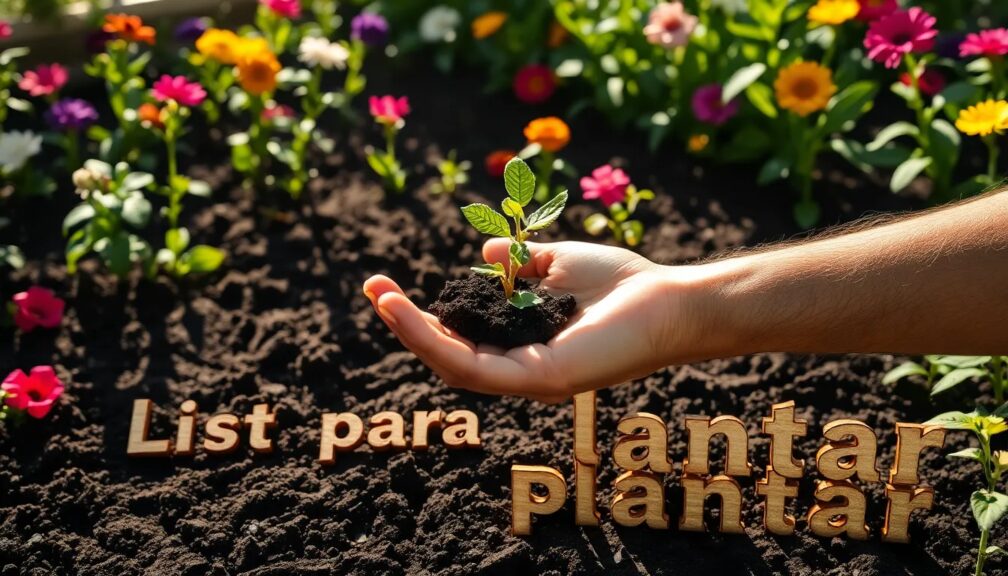
When it comes to enriching soil for gardening, adding compost is a quintessential step for ensuring a thriving garden. Gardeners often wonder about the optimal timing for planting after incorporating this nutrient-rich material into their soil. Understanding the decomposition rate of compost and its integration into the soil ecosystem is crucial for planting success. In this article, we will delve into the timing of planting after compost application, factors that influence this timeline, and tips to ensure your plants get the best possible start. Whether you're a seasoned gardener or just starting out, you'll learn how to gauge the perfect moment to transition from soil preparation to planting.
How long to let compost sit before planting?
Unveiling the mystery of compost maturation is akin to unlocking a secret garden of lush growth and abundant harvests. The waiting period before integrating compost into your garden can be the defining factor between mediocrity and excellence in plant health and yield.
Imagine nurturing a seed only to realize you've introduced it to a bed of unfinished compost. The results could be catastrophic, with nutrient imbalances and harmful pathogens wreaking havoc on your tender plants. To prevent this, a period known as curing or aging is crucial for compost to transition from a volatile mixture to a stable, nutrient-rich soil amendment.
This magical transformation typically takes anywhere from four to six months, but can vary based on factors such as compost ingredients, size of the compost pile, and environmental conditions. Monitoring this process is not just about patience; it's about understanding the science of decomposition.
During this period, microbial activity works tirelessly, breaking down organic matter into humus – the gold standard of soil fertility. The process is a delicate dance between carbon-rich materials and nitrogen-rich waste, with temperature and moisture levels acting as the dance floor. Too much moisture, and your compost could become a sodden, smelly mess; too little, and the decomposition grinds to a halt.
But wait, there's more to consider:
1. Temperature is a telltale sign of compost activity. A healthy pile will heat up as microbes work and then cool down when the material is nearly ready.
2. Texture and smell are also indicators. Mature compost will be crumbly, dark, and have an earthy odor, devoid of any remnants of the original organic materials.
3. Plant tests can be the ultimate judge. Try planting a few hardy plants in a sample of compost. If they flourish, it's a green light for your garden beds.
The suspense of this waiting game is palpable, but the rewards are immeasurable. By allowing compost to fully mature, you ensure that your soil will be a thriving ecosystem, underpinning the health and vitality of every plant you grow. It's a narrative of transformation that promises to take your gardening journey from the mundane to the extraordinary.
Stay tuned, as we delve deeper into the art and science of composting, revealing tips and tricks for creating the perfect environment for your compost to thrive. This isn't just about growing plants; it's about cultivating a living soil that sustains life from the ground up. The journey to the ultimate compost is just beginning, and trust us, you don't want to miss a single step.
How to know when compost is ready for plants?
Wondering if your compost heap is a treasure trove of garden gold yet? The anticipation can be tantalizing, and the lure of boosting your plants with this rich, homemade elixir is almost irresistible. But hold your trowels and pitchforks! Before you start spreading that earthy goodness, you need to ensure it's ripe for the roots.
First, let's talk about the transformation your pile has been undergoing. It's not just a heap of yard waste; it's a bustling metropolis of microorganisms working tirelessly to break down organic matter into humus, the lifeblood of your garden. And much like a fine wine, compost needs time to mature.
So, how do you unveil the secret to perfectly aged compost? Look for these telltale signs:
1. Color and Texture: Ready compost will boast a deep, dark brown hue, much like the soil of an ancient forest floor. It should crumble between your fingers, a texture so fine that it whispers through your touch.
2. Smell: Inhale the sweet scent of success. When your compost stops smelling like rotting vegetables and instead has an earthy, fresh fragrance, akin to a rain-soaked forest, it's a strong indicator that it's time to enrich your soil.
3. Temperature: As the microbial mosh pit winds down, the temperature of your compost will drop to match the surrounding air. If your heap is still warm, give those microorganisms a little more time to party.
Your plants are yearning for this tonic, and the fruits of your labor are nearly within reach. Just imagine: robust tomatoes, vibrant peppers, and lush greenery, all thanks to your patience and composting prowess. You're on the brink of unlocking a garden that's the envy of the neighborhood.
Stay tuned for more insights that can help you maximize your compost's potential and transform your garden into a paradise of productivity. Don't let the fear of missing out cloud your judgment; the perfect moment for your compost is coming, and you'll be ready to seize it.
Can you plant on top of compost?
Absolutely, and therein lies the secret to unlocking unparalleled plant growth and garden vitality. Imagine a world where your garden thrives, bursting with life and the lushness of thriving plants. This is the reality for those who harness the potent power of compost as a planting medium.
Composting is not just a way to recycle kitchen scraps and yard waste; it's a veritable gold mine for your garden. It's rich in nutrients and microbial life that are essential for plant health. Using compost provides a slow release of nutrients, mimicking the natural processes found in healthy ecosystems. This means plants have access to a balanced diet of vital minerals and elements, ensuring they grow stronger and healthier.
By planting directly into compost, you're giving your plants an incredible head start. Seedlings can push through the nutrient-rich medium with remarkable ease, unfurling their roots in an environment that's both nurturing and protective. This leads to robust growth and a garden that's more resilient against pests and diseases.
What's more, using compost can improve soil structure and water retention, making your garden more drought-resistant and reducing the need for frequent watering. The benefits are crystal-clear, but the magic doesn't stop there.
There's a technique to maximizing the potential of planting on compost, and it's easier than you might think. From knowing when it's the right time to add compost to your garden to understanding the perfect balance of green and brown materials in your compost pile, these are the insights that will elevate your gardening game.
Ready to transform your garden into a beacon of health and productivity? Stay tuned to discover how to make the most of compost in your planting strategy, ensuring that every seed you sow has the best possible chance at success. The journey to a greener garden begins with the wisdom of working with compost, and we're here to guide you every step of the way.
Can you put too much compost into soil?
Absolutely! As counterintuitive as it might sound, there is indeed such a thing as too much of a good thing when it comes to compost in your soil. Garden enthusiasts and eco-conscious growers, listen up, because this might be the missing puzzle piece in your quest for the perfect garden.
While compost is a garden gold, enriching your soil, enhancing plant growth, and improving soil structure, it's crucial to recognize the balance required in this delicate soil ecosystem. Overloading your soil with compost can lead to nutrient imbalances, disrupt soil pH levels, and even attract unwanted pests.
Picture this: your plants are growing in what you believe to be the most nurturing environment, but then you start to notice issues in plant development, discoloration, or stunted growth. The culprit? It could be compost excess. And this is just the tip of the iceberg.
Diving deeper, we'll explore the signs of compost overload, how it affects different types of plants, and the ideal compost-to-soil ratio that maximizes plant health. Stay tuned to unlock the secrets of using compost effectively and avoid the pitfalls of over-amendment that could potentially turn your garden dreams into a nightmare.
Remember, there's a fine line between a flourishing garden and a faltering one, and sometimes, less is more. Get ready to learn how to walk that line with precision!
How long after adding compost can you plant in the ground
Imagine stepping into your garden, the scent of fresh soil lingering in the air, your hands ready to plant. You've just enriched the earth with nutrient-packed compost, a gardener's gold, and the anticipation to see those first sprouts is almost unbearable. But wait, have you given the compost enough time to work its magic?
This is not just a question of patience; it's about the science of soil health. The ideal timeline between incorporating compost and planting is a delicate dance that can make or break your garden's success.
Let's delve into the art of composting. As organic matter breaks down, it transforms into a powerhouse of nutrients that can enhance plant growth significantly. However, if you rush into planting, you might not harness the full potential of compost.
Believe it or not, the answer to the perfect planting time is not set in stone. Variables such as the type of compost used, the weather conditions, and even the specific plants you intend to grow can influence the waiting period.
For instance, mature compost, which has fully decomposed, can allow for almost immediate planting. Meanwhile, fresher compost might require a few weeks to avoid the risk of 'burning' your plants with excess nitrogen.
But here's the kicker – this waiting period can be a blessing in disguise. It allows the compost to fully integrate into the soil, fostering an environment brimming with microbial life and nutrient availability.
Do you want to know the secret to determining the perfect planting time after adding compost? The answer lies within understanding the balance of your garden ecosystem.
Stay tuned as we uncover the signs that your soil is ready, how to test if your compost is garden-ready, and the foolproof method to ensure you're planting at the most opportune time. Your dream garden is just a handful of compost away.
Consejo final: Typically, you can plant immediately after adding compost to the soil, as it enriches the planting environment without the need for a waiting period. Ensure the compost is fully mature and mixed well with the existing soil for optimal plant growth. Wishing you a bountiful and healthy garden!
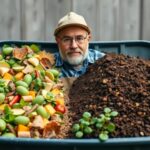 What happens if you don't mix your compost
What happens if you don't mix your compost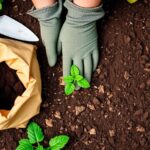 Is it OK to mix potting soil with topsoil
Is it OK to mix potting soil with topsoil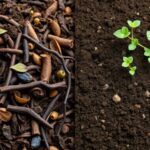 What's better compost or topsoil
What's better compost or topsoil Can you plant immediately after tilling
Can you plant immediately after tilling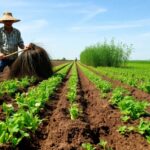 Does tilling cause more weeds
Does tilling cause more weedsIf you want to know more about similar articles like How long after adding compost can you plant you can visit category Gardening Tools.